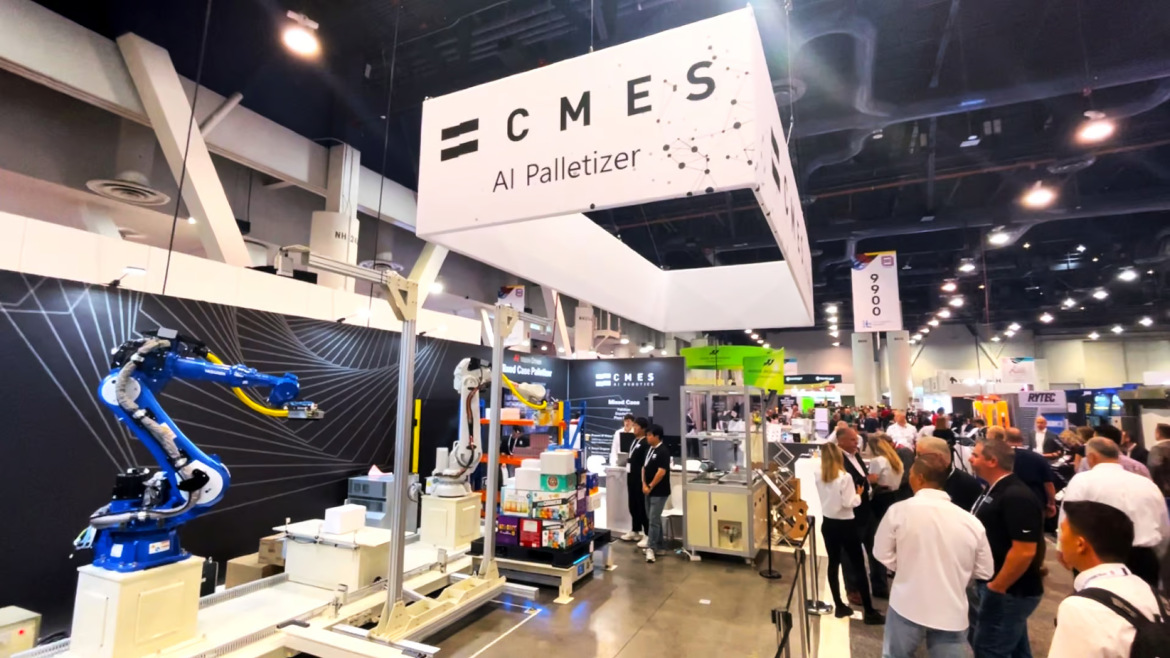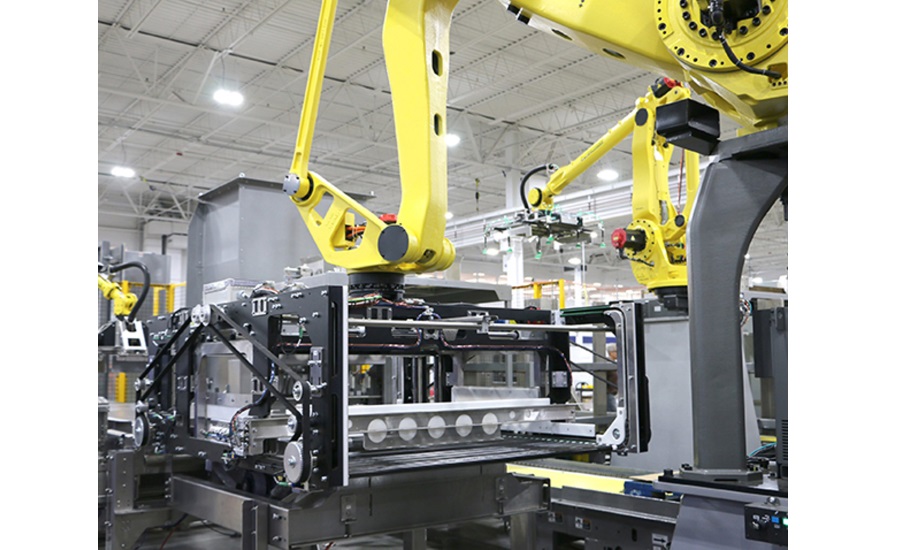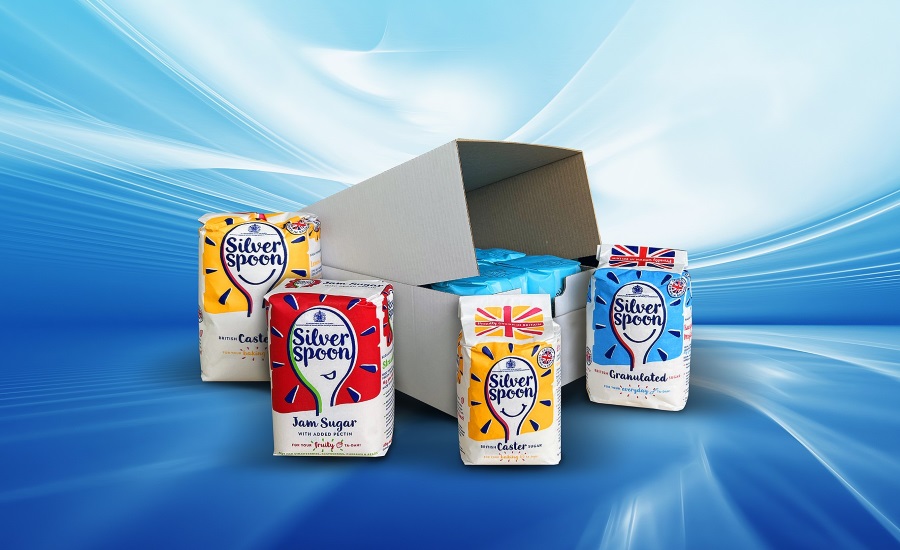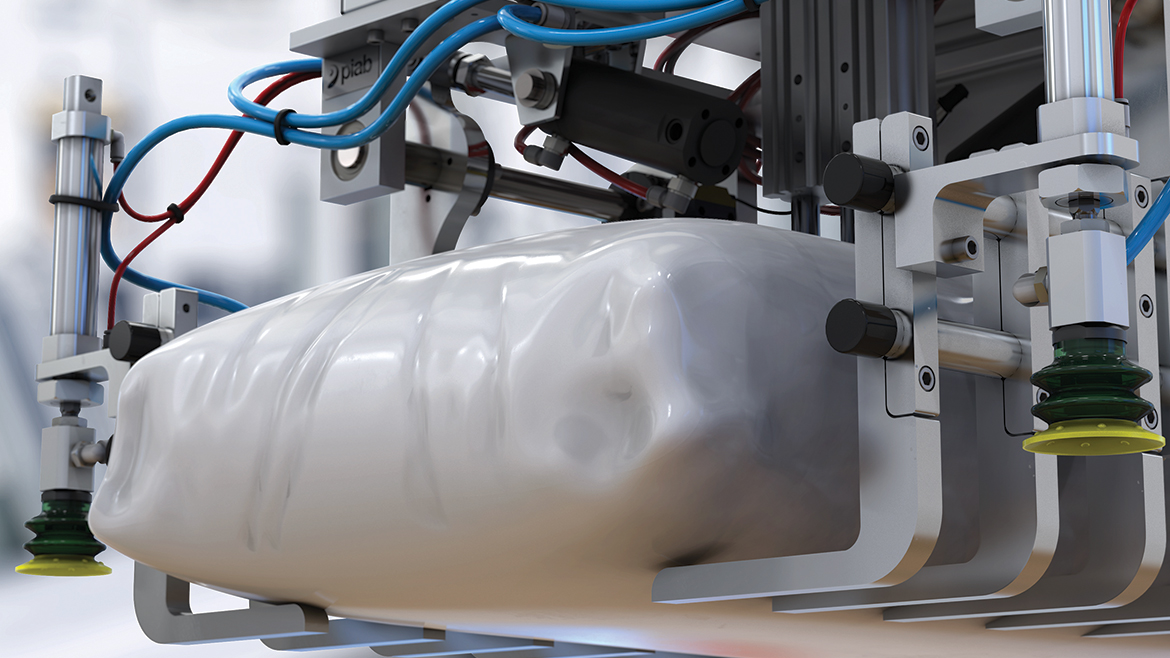As suppliers are looking to be more efficient in their end-to-end solutions, a key area of focus has been finding innovative ways to improve the palletizing process.
- CMES Robotics recently announced a fully automated mixed-case palletizing system that is suitable for a variety of sectors like e-commerce, food and beverage, and manufacturing.
- Additionally, Schneider Packaging Equipment Company reached a licensing agreement with the ITW Hartness Division to enter the high speed palletizing market.
- British Sugar enlisted the help of Sidel to install a compact and flexible case packing and palletizing solution that is capable of handling multiple pallet and format types to accommodate single sugar bags to new shelf-ready secondary packaging.
- And finally, Piab introduced a lightweight bag gripper that can fit any roller conveyor on the market.
Read more about these solutions below.
CMES Robotics Introduces Innovative Mixed-Case Palletizing Solutions

CMES showcases new palletizing solutions at PACK EXPO Las Vegas. Courtesy of CMES Robotics
CMES Robotics, a leading provider of advanced AI vision software, is proud to announce a fully automated mixed-case palletizing system using Yaskawa Motoman. Together, they are introducing a solution that can palletize complex random cases at a production rate without the need for training prior to deployment.
The new mixed-case palletizing solutions combine CMES Robotics' expertise in automation systems with state-of-the-art robotic technologies. This collaboration aims to address the growing demand for flexible and efficient palletizing solutions in industries such as e-commerce, logistics, food and beverage, manufacturing, and more.
Schneider Packaging Equipment Enters High-Speed Palletizing Market

The Hartness High-Speed Layer Palletizing Tool was a key part of the licensing agreement. Courtesy of Schneider Packaging Equipment Company
Schneider Packaging Equipment Company Inc., a Pacteon Company, has entered the robotic high-speed palletizing market through a strategic licensing agreement with the ITW Hartness Division.
After the Hartness Division’s strategic decision to reposition its product portfolio, Schneider began key conversations around setting up a licensing agreement for the Hartness Division’s high-speed robotic palletizing offerings to ensure the ability for Schneider to offer on future projects. Also included in the agreement is the ability for Schneider to support already-commissioned systems by Hartness.
Sidel, British Sugar Announce Partnership to Install End-of-Line Solution

The solution will offer a highly efficient answer for future production management. Courtesy of Sidel
Sidel has been appointed to install a highly flexible end-of-line turnkey solution for British Sugar, the leading producer of sugar for the British and Irish food and beverage markets.
The holistic and tailor-made solution will support the British company, a subsidiary of Associated British Foods plc that works with 2,300 growers, to meet market requirements as well as retailer expectations.
With increasing consumer demands and escalating sugar sales, British Sugar processes around 8 million tons of sugar beet to produce up to 1.2 million tons of sugar annually. The company required a large-scale operations replacement for its end-of-line system that was over 38 years old, including a brand-new solution with a high level of multiple SKU complexity management and automation.
Piab Strengthens its Grip on Palletizing with the LBG-50

The LGB-50 provides a gentle, yet firm grip to ensure product quality. Courtesy of Piab
An unavoidable challenge when defining a new bag gripping system in a palletizing line is to get the exact measurements to align with the conveyor rollers for a smooth lifting and releasing process. This demands time-consuming analysis and design, and later, even more time for adaptation and adjustments.
Furthermore, additional solutions may have to be considered, e.g., for slip sheet handling, which prolongs the implementation process and may interfere with the original set-up and purpose of the gripper.


